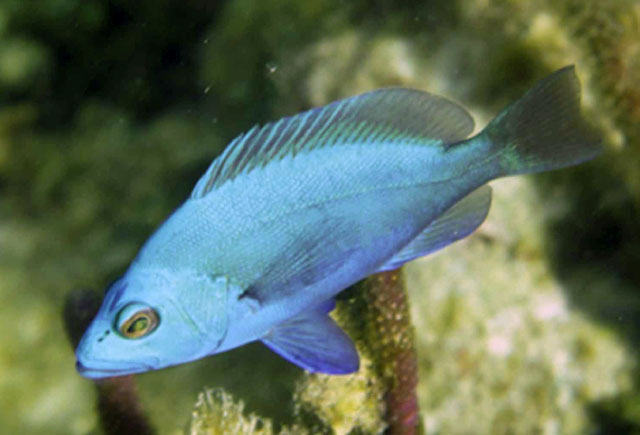| Serranidae (Sea basses: groupers and fairy basslets) |
| 8.72 cm SL (male/unsexed) |
|
reef-associated; marine |
| Caribbean Sea: Pelican Cays, Belize (Ref. 88139). |
|
Dorsal spines (total): 10-10; Dorsal soft rays (total): 14-15; Anal spines: 3-3; Anal soft rays: 6-7; Vertebrae: 23-23. This species is distinguished from its congeners by the solid deep iridescent blue color and lack of black margins on fins. It is similarly colored as the blue hamlet, H. gemma, from Florida and the Yucatan; it is only distinguished by having dark black upper and lower margins on the caudal fin (Ref. 88139). |
| This species is often found among the mangrove roots that grow over shallow seagrass
beds. The colors of H. maya and the tunicate, Clavelina puerto-secensis, (growing on mangrove roots) are quite similar and perhaps this hamlet has evolved camouflage coloration against this tunicate. It has also been observed on several occasions that this species attacks small silversides (Jenkinsia lamprotaenia) which form diurnal aggregations among the mangrove roots (Ref. 88139). |
|
Endangered (EN); Date assessed: 07 January 2020 (B1ab(i,ii,iii)+2ab(i,ii,iii)) Ref. (130435)
|
| harmless |
Source and more info: www.fishbase.org. For personal, classroom, and other internal use only. Not for publication.

